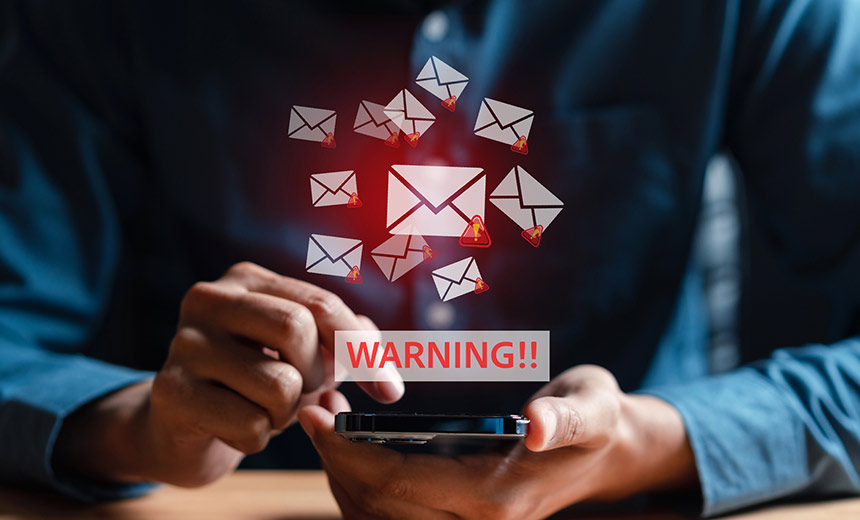As our digital landscape continually evolves, so do the techniques and strategies hackers employ. With email being one of the most common communication methods, it remains a primary target for cybercriminals. Understanding the latest email hacking trends is crucial for personal and professional safety. This comprehensive guide delves deep into the most recent email hacking trends to help you stay a step ahead.
1. Spear Phishing
While phishing is a widespread threat, spear phishing is its more targeted cousin. Here, attackers customize their bogus emails, using the victim’s name, job title, or other personal details, making the scam look incredibly genuine. The personalized nature of these attacks increases their success rate.
Countermeasure: Always verify unexpected requests, especially if they involve financial transactions or confidential information.
2. Business Email Compromise (BEC)
BEC attacks target employees with access to company funds or sensitive data. Hackers often pose as senior executives or vendors, requesting fund transfers or information. These attacks have caused significant financial losses in recent years.
Countermeasure: Implement multi-step verification for financial transactions and sensitive data sharing.
3. Credential Stuffing
With numerous data breaches releasing vast amounts of login credentials, attackers use these in ‘credential stuffing’ attacks. They automatically input these leaked usernames and passwords into various online platforms, hoping some might work.
Countermeasure: Regularly change passwords and avoid reusing them across platforms.
4. Account Takeover (ATO)
In ATO attacks, cybercriminals gain access to users’ accounts, often to send spam or phishing emails from a trusted source, making it hard for recipients to recognize the deceit.
Countermeasure: Utilize two-factor authentication (2FA) and monitor account activity.
5. Ransomware through Email
Ransomware attacks involve hackers encrypting users’ data, demanding a ransom for decryption. While they can be launched in various ways, emails are a common initial entry point.
Countermeasure: Avoid opening unfamiliar attachments and maintain regular data backups.
6. Malicious Attachments and Links
Emails containing malicious attachments or links can install malware upon being opened. While this isn’t a new tactic, the disguises they use have become more sophisticated.
Countermeasure: Scan attachments before opening and hover over links to see their actual destination.
7. Fake Cloud Storage Emails
These emails imitate notifications from platforms like Google Drive or Dropbox, stating you’ve received a shared document. Clicking the link may lead to malicious sites or file downloads.
Countermeasure: Log in to your cloud storage directly to verify shared files.
8. Machine Learning and AI-Powered Phishing
Advanced hackers now use Machine Learning (ML) and Artificial Intelligence (AI) to craft convincing phishing emails, making them harder to detect.
Countermeasure: Stay updated on the latest phishing techniques and consider AI-powered security solutions.
9. Mobile Email Hacks
With mobile devices now a common way to check emails, they’ve become a target. Mobile-specific email attacks might lead victims to malicious apps or mobile-specific phishing sites.
Countermeasure: Use trusted mobile security solutions and be wary of unsolicited emails.
10. Man-in-the-Middle (MitM) Attacks
MitM involves hackers intercepting email communications, potentially altering the content without either party knowing. It’s a sophisticated technique that can lead to information theft or malware installation.
Countermeasure: Use encrypted email services and secure Wi-Fi connections.
11. Domain Spoofing
Hackers can sometimes send emails appearing to come from a genuine domain, like your bank or workplace, making the threat hard to spot.
Countermeasure: Scrutinize email addresses, especially if the content seems suspicious.
12. Social Engineering Post-Breach
After a successful breach, attackers might engage in social engineering, manipulating individuals into offering even more information or access.
Countermeasure: Always verify unusual requests and promote a culture of cybersecurity awareness.
13. Homograph Attacks
Cybercriminals can register domain names that visually resemble trusted brands by using characters from different languages, leading users to fake sites where their credentials can be stolen.
Countermeasure: Check URLs closely, especially if you didn’t navigate to them directly.
Conclusion
As daunting as the ever-evolving landscape of email hacking trends might seem, knowledge remains your most potent weapon. By understanding these threats, you’re better positioned to recognize and counteract them. Adopt a proactive approach: keep software updated, maintain regular data backups, and promote a culture of continuous learning and awareness. Remember, the digital world’s threats are many, but with informed vigilance, you can ensure that your email communications remain both effective and secure.



